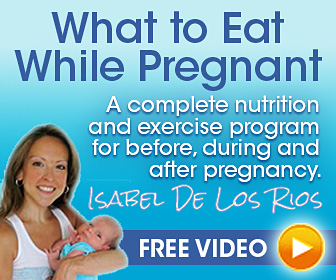 Parenting a newborn is one of the most difficult challenges a woman can face. Exercise is probably the last item on your list of things to worry about, but a simple postnatal exercise routine can help relax your mind and body, give you a needed energy boost, and help your body return to its prenatal shape. Here are a few pointers to help you get started:
Parenting a newborn is one of the most difficult challenges a woman can face. Exercise is probably the last item on your list of things to worry about, but a simple postnatal exercise routine can help relax your mind and body, give you a needed energy boost, and help your body return to its prenatal shape. Here are a few pointers to help you get started:
1. When to begin:
There is no rule about when to start exercising after pregnancy, as this depends on your individual physical circumstances. Important considerations include:
– your fitness level before pregnancy
– the length and difficulty of your labor and delivery
– if you had a cesarean section
– if you or the baby had any significant complications
Most doctors recommend waiting at least 6 weeks before starting a moderate exercise program. It is important to give your body enough time to fully heal.
A few key indicators:
– You should no longer be experiencing any significant vaginal pain or soreness.
– Your lochia (vaginal discharge) should have tapered to a minimum and be dark in color.
– If you had a C-section, be sure that your wound is completely healed. You should be able to lift your arms above your head without any pain or discomfort.
2. How to begin:
Just start moving. Take a walk each day for 10-20 minutes. Starting slow and easy will help you get a sense of what your body is ready for, and it may be nice to just get out of the house for a bit. If your lochia suddenly increases and/or turns bright pink or red once you’ve started walking, you should stop immediately and talk with your doctor.
 Depending on your baby’s personality or your access to additional help in parenting, it may not be possible for you to set a regular schedule or to leave the baby. In these cases, just try to be creative. Walking around the home as you care for your baby, or pushing him/her in a carriage during a nap are just a couple simple ideas to help you get started.
Depending on your baby’s personality or your access to additional help in parenting, it may not be possible for you to set a regular schedule or to leave the baby. In these cases, just try to be creative. Walking around the home as you care for your baby, or pushing him/her in a carriage during a nap are just a couple simple ideas to help you get started.
3. Then what?
Once you feel you’re ready and your doctor gives the okay, you can start adding other activities and slowly increasing the duration and intensity of your exercise. If you were active before your pregnancy, you may want to design a workout plan yourself, which will gradually get you back to your prenatal fitness level.
Other great options include postnatal exercise dvds for home use, or classes where you can go out with your baby and meet other new moms. Both classes and videos often include stretching and toning workouts, such as yoga or pilates, and muscle exercises specifically geared toward women after pregnancy (for example, abdominal movements for post C-section ops or Kegel exercises to help strengthen the pelvic floor muscles). Some google searching of either postnatal exercise dvds or classes can help you find results more specific to your price range, interests, and/or location.
Dieting is not recommended for postpartum weight loss. It’s great to focus on eating healthier, but calorie restriction should be avoided. If you are breastfeeding, your body is going to need adequate calories and nutrition to produce milk. In addition, even if your delivery trauma has healed, your body is still undergoing changes and recovering, and caring for a baby is extremely hard work. You don’t want to be denying your body the energy it needs.
